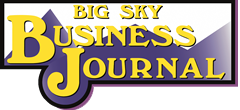Sky Creek Ventures Llc, 6715 Cove Creek Dr, (503) 931-0761, Elgas, David And Jamie , Real Estate Rental, Billings, Mt, 59106
Emm Topnotch Construction Llc, 20 Allen Creek Ln, (406) 922-7266, Morales, Elda , General Contractors, Columbus, Mt, 59019
Lower Llc/Ulhl, 2646 Grand Ave Ste 2, (406) 294-2660, Bauer Tristi , Bank/Loan Agencies, Billings, Mt, 59102
Scotty And I… Schneider Enterprises, 2609 4th Ave S, (406) 702-0984, Schuchard/Schneider, Jennifer/Scott – , Service, Billings, Mt, 59101
Franco Siding & Remodeling Llc, 7841 Alderson Ave, (732) 799-8317, Franco, Maira – , General Contractors, Billings, Mt, 59106
Resilient Nails Llc, 2910 Grand Ave, (406) 633-5578, Hernandez/Nava, Sierra/Randall – , Service, Billings, Mt, 59102
Artisancto Productions Llc, 342 Sioux Ln, (406) 861-0315, Verdell, Duhart , Retail Sales, Billings, Mt, 59105
Powerwash 406, 2424 1st Ave S, (406) 694-5757, Marks, Rachell – , Service, Billings, Mt, 59101
Smoothie Lab, 212 N 29th St, (406) 465-6733, Jones, Zoe , Restaurants, Billings, Mt, 59101
Ineedfitness, 2518 Custer Ave, (406) 647-5082, Lachenmaier, Megan – I, Service, Billings, Mt, 59102
Billings Wing Company, Llc, 411 S 24th St W, (406) 294-9464, Goube, Steven – , Restaurants, Billings, Mt, 59102
Dakava House Downtown, 224 N 29th St, (406) 371-5258, Grundhauser, William , Restaurants, Billings, Mt, 59101
Cottonwood Construction, 2804 Hoover Ave, (406) 690-1660, Wright, Trevor – , General Contractors, Billings, Mt, 59102
Rare Motor Cars, 8270 Pond Rd, (406) 661-3988, Diament, Richard – , Retail Sales, Billings, Mt, 59106
Wayne’s Handyman Service, 1606 Ash St Ballantine #11, (406) 647-8001, Yates, William – , Service, Ballantine, Mt, 59006
Decorative Concrete Artisans, 7003 Northwind Drive, (406) 876-0978, Devlin, Dustin – , General Contractors, Billings, Mt, 59106
Get Clean Llc, 1301 Alder Ave, (406) 794-2941, Stewart, Nicholas – , Service, Laurel, Mt, 59044
Featherstone Llc, 2525 Minnesota Ave, (484) 888-2050, Lorenz, Paula – , Retail Sales, Billings, Mt, 59101
Shaundel Krumheuer Dba 504 Square Feet, 1314 4th Ave N, (406) 647-0153, Krumheuer, Shaundel , Retail Sales, Billings, Mt, 59101
Ultra406 Enterprises Inc, 1208 N Frontage Rd #17, (406) 690-9634, Steffes, Justin L – , Service, Billings, Mt, 59101
Mt Balloon Designs Llc, 1834 Bridge Stone St, (406) 690-1916, Derrick, Nicole , Service, Billings, Mt, 59106
Doggy Duties, 2230 Fairway Dr, (406) 208-4814, Southard, Kevin & Cipriana , Service, Billings, Mt, 59102
Tck Hospitality Llc, 19580 West Indian School Rd Ste105-107, (605) 519-0901, Karli, Tim – , General Contractors, Buckeye, Az, 85396
Victor’s Tree Service, 1408 West Ramshorn, (406) 855-7841, Perez, Victorino – , Service, Laurel, Mt, 59044
Balance Minds Bookkeeping, 1134 Central Ave, (406) 694-5850, Stoner, Jada-Rose – , Service, Billings, Mt, 59102
Home Ready Services, Llc, 138 Northern Avenue Apt A, (406) 208-6864, Harper, Lorita , Service, Huntley, Mt, 59037
Billings Auto Detail, 317 S 26th St, (406) 206-3756, Poppler, Austin – , Service, Billings, Mt, 59101
Mvd Express, 3470 Gabel Rd Ste 1, (505) 304-1165, Fusco, Rick , Service, Billings, Mt, 59102
Treasures Rediscovered Llc, 8958 Belmar Court, (978) 728-9464, Blackburn, Chad – , Service, Saint Louis, Mo, 63126
Knightshadow Properties Llc, 6133 Farmstead Ave, (406) 671-3711, Knight, Dan – , Real Estate Rental, Billings, Mt, 59101
Heirloom Estate Services, 3215 Redwood Ln, (406) 697-3822, Hutchinson, Mary – , Service, Billings, Mt, 59102
Phoenix Freight Services Inc, 439 S Lakeview Dr, (406) 781-4453, Faldzinski, Anthony – , Service, Billings, Mt, 59105
Laces’ Luxuries, 7010 Shepherd Rd, (406) 629-0159, Robinson, Lacey – , Service, Shepherd, Mt, 59079
Meschnark Cleaning Services Llc, 3040 Central Ave D108, (702) 232-3390, Meschnark, Brit – , Service, Billings, Mt, 59102
Billings Best Comedy, 627 N 14th St, (406) 598-4343, Miller, Heather – , Service, Billings, Mt, 59101
Al’s Crochet Critters, 424 Custer Ave, (509) 281-0341, Campbell, Alaura – , Retail Sales, Billings, Mt, 59101
Sara Lynn Asap, Llc, 1106 Primrose Dr, (406) 670-8990, Baischi, Lynnette – , Service, Billings, Mt, 59105
Starbucks Coffee #71295, 3049 Meadow View Dr, (206) 594-7273, Starbucks Corporation, , Restaurants, Billings, Mt, 59102
Wild Gal Wardrobe, 410 E Alkali Creek Rd, (406) 927-5576, Wildman, Kaitlyn , Retail Sales, Billings, Mt, 59105
Hilmes Motorworx Llc, 2027 George St, (775) 299-8081, Hilmes, Dillon , Service, Billings, Mt, 59102
Black Hills Federal Credit Union , 4002 Montana Sapphire Dr, (404) 431-1204, Taylor, Tyson , Bank/Loan Agencies, Billings, Mt, 59106
Julie Rocks & Gems, 321 Broadwater Ave, (406) 839-5768, Kraenzel, Julie , Retail Sales, Billings, Mt, 59101
Presence By Evot, 5852 Autumnwood Dr, (406) 855-0101, Oblander, Tove – , Service, Billings, Mt, 59106
Magic City Roll Offs Llc, 100 Lakewood Ln, (209) 981-8205, Aynaga, Brandon – , Service, Billings, Mt, 59105
B&S Dirt Worx Llc, 1514 Rancho Vista Ave, (406) 230-0171, Maetzold, Samuel J – , General Contractors, Billings, Mt, 59105
Maid For It Cleaning, 26 Hartland St N, (406) 601-0964, Modine, Kacee , Service, Billings, Mt, 59105
Jesse Harris Photography, 427 Hallowell Ln, (406) 384-8549, Myers, Jesse – , Service, Billings, Mt, 59101
Marble Coffee Co- Roastery, 3485 A J Way # 110, (406) 371-6529, Marble, Jen/Jason – , Retail Sales, Billings, Mt, 59106
Don The Plumber, 1625 Front St, (406) 672-1587, Summens, Don , Plumbing Contractors, Billings, Mt, 59101
Handy Home Services, Out Of City, (406) 640-8846, Skender, Jeremiah – , General Contractors, Billings, Mt, 59101
The Sippin’ Waggin’, 1303 Concord Dr, (406) 371-2249, Boucher/Benson, Leigh/Evelyn , Restaurants, Billings, Mt, 59101
Mastec Network Solutions Llc, 1825 Ponce De Leon Blvd #543, (949) 637-9674, Ruehle Kathi , General Contractors, Coral Gables, Fl, 3134
Christy’s Treats, 315 S 2nd Street, (406) 425-4479, Coulimore, Christine – , Service, Bridger, Mt, 59014
Mch Construction Montana Llc, 46 Cedar Pointe Loop, (406) 702-0219, Alkire, Hazen , General Contractors, Columbia Falls, Mt, 59912
On Top Construction, 13 Lapin St, (406) 702-5268, Helms, Jessie – , General Contractors, Billings, Mt, 59105
Beauty And Balance Wellness Studio Llc, 1140 16th St W Ste 15, (406) 591-5182, Bernstein, Dawn , Cosmetology, Billings, Mt, 59102
Omelio Constructions, 302 Jackson St Trailer #23, (406) 444-3665, Ramirez, Omelio – , General Contractors, Billings, Mt, 59101
Revington Properties, 930 Ginger Ave, (615) 330-8228, Cole, Morgan – , Real Estate Rental, Billings, Mt, 59105
Black’s Portable Buildings, 2376 Main St, (406) 591-1961, Black, Karen – , Retail Sales, Billings, Mt, 59105
Mark Ryan Arts, 483 S 44th St W, (406) 839-6835, Ager, Mark – , Retail Sales, Billings, Mt, 59106
White River Janitorial & Security, Hwy 212 Mile North, (406) 591-0315, Risingsun Jr, Irvin – , Service, Busby, Mt, 59016
Superior Tire, 1707 St Johns Ave, (406) 690-4630, Huskey, Dayton – , Service, Billings, Mt, 59102
Two Buffalos Construction, 327 Jemstone Drive, (406) 371-6635, Moreno, Annie – , General Contractors, Billings, Mt, 59101
Alpine Chic Boutique, 1514 Prairie Meadow Ln, (406) 951-1317, Klein, Hailey – , Retail Sales, Billings, Mt, 59101
Terry Watley Dry Wall And Paint, 2101 11th Ave N, (406) 647-9420, Watley, Terry – , General Contractors, Billings, Mt, 59101
Tire Despose-All, 4230 Carlton Ave Sw, (406) 672-0950, Nease, Joshua , Service, Billings, Mt, 59101
Sunrise Collectibles, 536 Avenue C, (406) 696-0754, Perez, Tajin , Retail Sales, Billings, Mt, 59102
One Of A Kind Handyman Llc, Out Of City, (406) 794-8475, Flattum, Lili – , General Contractors, Billings, Mt, 59101
Williams Photo Company, 429 N 33rd St Apt 610, (406) 670-7859, Williams, Rylee – , Service, Billings, Mt, 59101
Electronic Toys, 300 S 24th St W, (347) 702-0504, Salem, Gasser – , Retail Sales, Billings, Mt, 59102
North Fleet Services Llc, 2191 Overlook Dr, (509) 429-8379, Stalder, Bert & Kristi , Service, Billings, Mt, 59105
Mcp Development Inc, 3501 Sw Fairlawn Rd Ste 70, (785) 273-3880, Tolin Patrick – , General Contractors, Topeka, Ks, 66614
Chloes Nails Llc, 1423 38th St W, (307) 461-3226, Wilson, Chloe – , Cosmetology, Billings, Mt, 59102
Arnold Machinery Company, 8406 Rainy Lake Rd, (406) 927-5271, Pugmire, Jon – , Retail Sales, Billings, Mt, 59101
Burger King #2195, 790 King Park Dr, (406) 656-6711, Stanfield, Colin – , Restaurants, Billings, Mt, 59102
R & J Concrete Llc, 2616 Old Hardin Rd #14, (406) 647-6914, Overhuls/Ahern, Rusty/Jonathan , General Contractors, Billings, Mt, 59101
Big Sky Carpet & More, 1938 Saint Andrews Dr, (971) 400-4925, Mclaughlin, Justin – , Service, Billings, Mt, 59105
Roofix Technologies Llc, 5 W Mendenhall St #202, (855) 614-0653, Miller, Byron – , Roofing Contractors, Bozeman, Mt, 59715
Blue April Llc, 343 Quaking Aspen Ln, (406) 670-2225, Sheppard, Shawn – , Service, Billings, Mt, 59105
Bigsky 406 Enterprises, 661 Light Stream Ln, (406) 601-2134, Page, Jeremy & Marion – , Retail Sales, Billings, Mt, 59106
Hamilton Property & Construction, 2122 Bitterroot Dr, (406) 671-7100, Hamilton, Christopher – , General Contractors, Billings, Mt, 59105

